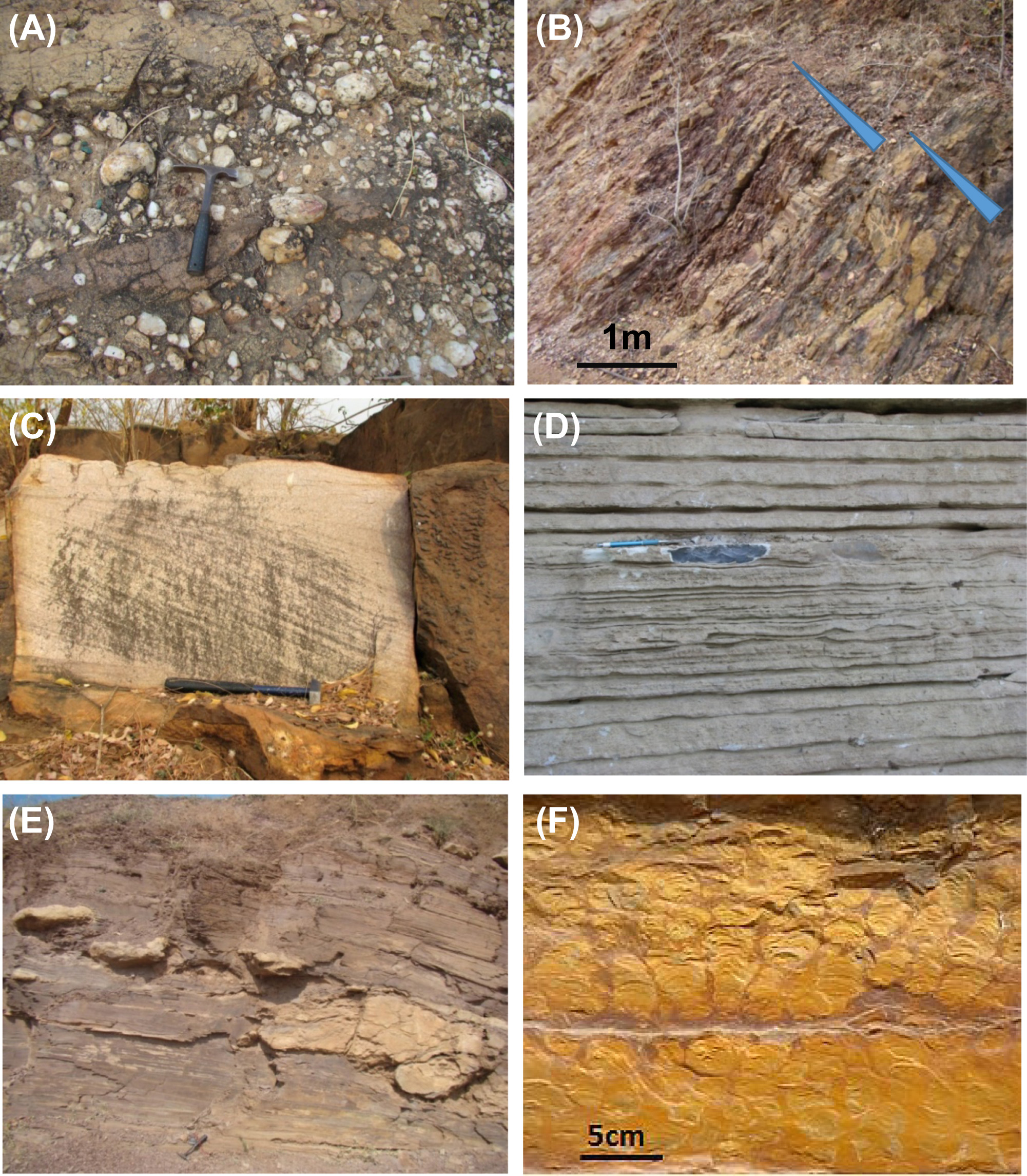Chandarpur Gr
Type Locality and Naming
Lithology and Thickness
Basal conglomerate (Lohardih Fm) transitioning to sandstone and shale (Gomarda Fm (Chaporadih Fm)), then sandstones of Kansapathar Fm. The siliciclastics of the Chandarpur Group exhibit remarkable variation in facies and thickness in different parts of the basin from east to west. The basin initiateswith deposition of a wedge of immature clastics (Fig. – image A) of Lohardih Fm, followed by deposition of very thick heterolithic succession (Fig. – image B), the Gomarda Fm (Chaporadih Fm), which grades up to a sheet of texturally and compositionally mature arenite, the Kansapathar Sandstone Fm (Fig. – image C), with minor arkose/subarkose.
[Figure: Chattisgarh basin Field photographs illustrating lithology and sedimentary structures. (A) Lohardih Fm - Poorly sorted, matrix supported ungraded, conglomerate. Note the occurrence of large fairly rounded clast with relatively smaller angular clasts. (B) Gomarda Fm (Chaporadih Fm) - Sand-mud heterolithic rocks. Note the successive fining upward cycles marking cyclic change in depositional environment. (C) Kansapathar Sandstone Fm - Cross-stratified sandstone. (D) Sarangarh Limestone Fm (Charmuria Limestone Fm) - Limestone-marl rhythmite. Bed thickness: 2-10 cm and separated by mm thin marl layer. (E) Gunderdehi Shale Fm - Upper part of with stromatolite bioherms appearing as isolated pockets. (F) Saradih Limestone Fm (Chandi Limestone Fm) - Stromatolitic limestone. Note that stromatolite columns are nonbranching and branching with two to six branches. Column height 5-15, width 1-3 cm. (from Saha et al., 2016)]
Relationships and Distribution
Lower contact
Major unconformity onto Basement of granite gneiss and greenstone belts (Archean)
Upper contact
Overlain by Bijepur Shale Fm, lowest formation included in Raipur Gr
Regional extent
GeoJSON
Fossils
Age
Depositional setting
Upward progression from alluvial fan-delta to shallow tidal shelf. The sequence shows strong lateral facies variations between different lithologies, and is inferred as a tectonically controlled fan-delta‒pro-delta succession, which developed at the initial stage of basin opening. The concluding Kansapathar Sandstone Fm was deposited in a wide tidal shelf, and represents the transition from the unstable rifting phase to the stable subsidence phase of the basin evolution.
Additional Information
